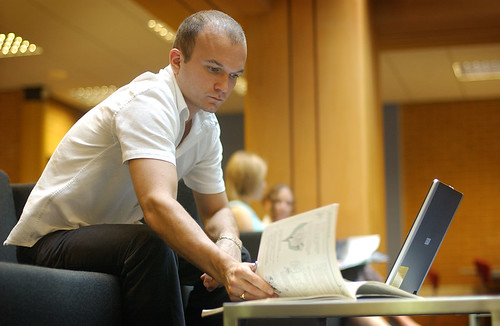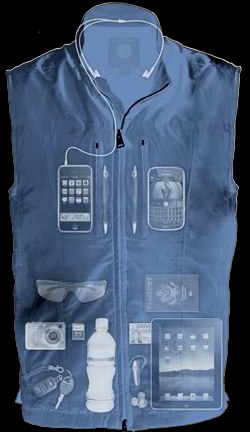 |
|
Many of the sessions were web cast to Extension Support offices across the country.
|
I’ve not been blogging much lately, and it’s not been from a lack of things to write about. In fact, I’ve started a number of blog entries, but not found time to finish them up. Here’s one.
At this writing, I am working a conference in Austin, Texas for a national organization of university-based educators and researchers who support Extension offices across the country. Their support ranges across a wild variety of topics from fire ants to GIS-supported farming. I did an adapted version of new pedagogies (see it at ISTE) and personal learning networks for the keynote, which seemed to have been well received.
Now I have the rest of the day to just wonder arround and learn. One guy, in the hall, right after the keynote, said something interesting to me. He said,
You know, what we need to be doing today is training our children’s brains, not just filling them.
I thought that really nailed a lot of what we’ve all been talking about.
I was talking to another guy whose specialty is precision agriculture. The example he shared was how they use yield data, tied to GIS, to communicate graphically how farmers need to tend specific parts pf their fields.
I find it educational to attend a conference whose topic is not part of your immediate world, and would strongly recommend it to any teacher. Much is the same. But perspectives differ. Right now I’m in a session on photo management, and the presenter is talking about Creative Commons.
There are two main points that seem to be coming out of many of the conversations I’m having. First, is globalization. She said that in rural America, which is the setting for most of their clients, the question persists,
If it’s worked for the last decade, then why won’t it work this year? ..next year?
The other issue is the challenge of getting colleagues to adapt to a new information environment. Many of these offices write and print guides and white papers for their clients and then sell them. It’s part of their funding. For them, it is hard to accept the suggestion that they put their content on the Web — for free.
Interestingly, many (if not a majority) of the sessions at the conference are about blogs and wikis and other W20 tools. Yet, back at home, coworkers resist, “If it’s worked for the last decade, then why won’t it work this year?“
During the Q&A at the end of my presentation, someone asked, “What about the time required to start your learning network and all the other investments.” “You are a Techie,” she continued. “You’re into this stuff.” I could tell that she was not asking for herself. She was looking for what to say when confronted by resistant colleagues. She even evoked the immigrant analogy.
You know what I said.
Some of us are immigrants.
But that is not an excuse.
It aggravates me that some people still believe that there’s a choice, that “techie” is a club that you can choose to belong to or ignore. I said that,
The prevailing information environment today is networked, digital, and abundant, and that this is not just a trend. It’s where information is. It’s where people go to find information. If you are supporting people by sharing information, then it’s where you need to be.
Again, and as is often the case, I was preaching to the choir. But hopefully, I was helping them to sing better.
At this writing, I have reached the last session that I will be able to attend before heading to the airport. It’s a session on tagging, and quite honestly, I’m not sure I’ve ever seen a session on tagging at any ed tech conference I’ve attended — and I just learned that the presenters (Kevin Gamble & Jason Young) are from North Carolina, NC State University, “Go Wolfpack!“
This just started getting interesting. The natural place to start in establishing tags is some academic listing of keywords for your area of service. But he is also suggesting that you look at the Google Analytics for your site or page, go to Traffic Sources, and then keywords, and see what words and terms people are using to find your web. I thought that was brilliant, though it may beold news to you.
Then they made me really think. Are tags suppose to be useful by your information clients, or are they simply an internal/in-house organization scheme. I had always thought of tags as a way for information consumers to access relevant content. But they seem to be saying that tags are more about what the computer is doing with the information than how people will use them. “Tags are personal.” He’s said that several times. The distinction between tags and categories is a big part of the conversation. Categories are for the customer while tags are for the organizer. I guess that it probably depends on the information product.
Time’s almost up, and this sessions is sending me away with things to think about — and that’s a very good thing.
– Posted using BlogPress from my iPad
Location:Brazos St,Austin,United States







